Prince Bayasanghor’s Book of the Kings (Shāhnāme)
Shāhnāme (“Iranian Book of Kings”) comprises a collection of epical poems by the great Iranian poet FerdowsiTusi (Firdawsi of Tus). The book as exerted a determining role in preserving Persian as a live language among the Persian-speaking countries, as well as on the Indian Subcontinent. Prince Bayasanghor’sShāhnāme is among the oldest, most precious copies of the book, that enjoys international fame for its makeup delicacy, beauty, artistic features, as well as its intact content on pages. It, also, presents the world with a masterpiece of Iranian decorative arts on texts. The mentioned decorative arts include its paintings, as well as such furnishing arts as gilding and binding, that have been done skillfully. The text comprises 60,000 lines of poems in Persian, furnished in the, so called, Rahli (roughly, “bookrack”: extended dimensions) size, and appears on 700 pages. The book was ordered in 1430 AD by Prince BayasanghorMirzā (Son of Shāhrokh, and nephew of TeymurGurkān, the Mongol king).
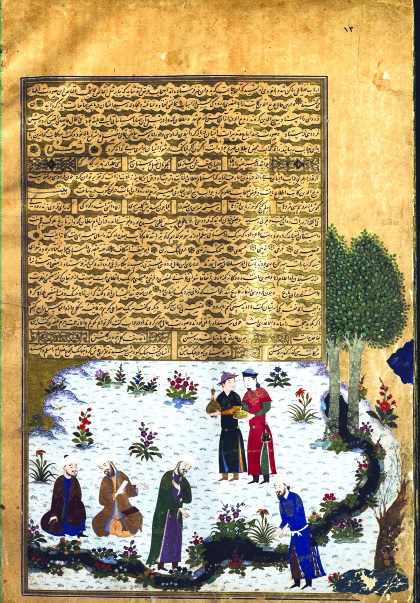
The Deed For Endowment: Rab’ I-Rashidi
KhājeRashidoddinFazlollahHamedāni, the Ilkhanid Period vizier of Iran, is famous to have ordered, among his other contributions, for the establishment of a comprehensive scientific, educational, and research town, titled Rab’-iRashidi , on the suburbs of Tabriz (north-west of Iran), to organize, centralize, and promote scientific and cultural research and activities. The mentioned comprehensive complex used to encompass libraries, higher education institutes, hospitals, nurseries, and industrial workshops, among its other activity centers. The vizier endowed a great deal to the complex to support it with the needed financial backing to facilitate its management. To put an order on the management procedure, and to protect the endowed properties, he managed to edit a deed of endowment in 382 pages in his own handwriting. Following the vizier’s murder, the complex was ruined; however, the only one surviving copy of the Deed of Endowment points to the majesty of the scientific and social complex of the period.
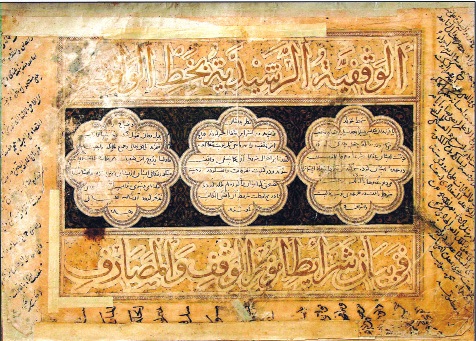
Administrative Documents of Astan-e Quds Razavi in the Safavid Era
This collection comprises 69,000 pages of documents for the 1589-1735 AD period, and is related to a vast geographical territory including Iran, especially, Khorassan (to its east), and parts of Afghanistan. The collection preserves valuable information on organizational, social, economic, agricultural, endowment, and religious issues, and provides the reader with a transparent picture of the city of Mashhad (to the northeast of Iran, nowadays, the capital of Khorassan Province), as well as the social life-styles of the Safavid Period, in the history of the country.
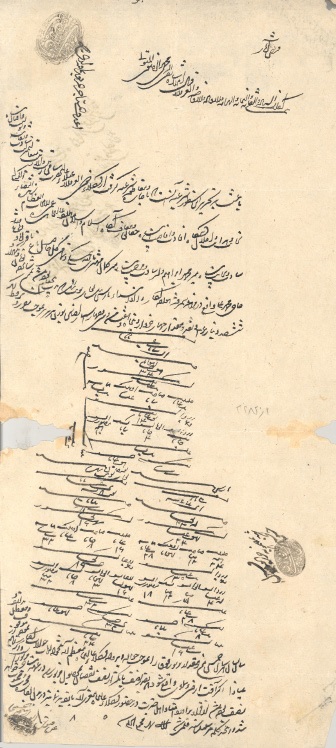
Al-Tafhim li Awa’ilSana’at al-Tanjim
The only book in Persian by AbureyhānBiruni, the prominent scientific (973-1048 AD), preserved to the present time, is Al-Tafhim li Awa’ilSana’at al-Tanjim. The book constitutes the oldest among the Persian texts on mathematics and astrology, and is almost unrivaled among the works of the Islamic Period in the history of Iran compiled in Persian, as regards the accuracy and validity of its content, and the literary value it bears. The author has succeeded in editing the material in an educational manner, easy to grasp by newcomers to astrology and mathematics; the text consists of 530 problems and the author’s endeavor to answer them. The easy to grasp, straightforward exposition has not, however, affected the strength of the text, the wellestablished message, and the vigorously constructed scientific method. The numerous renderings of the book into a number of living languages point to its importance.
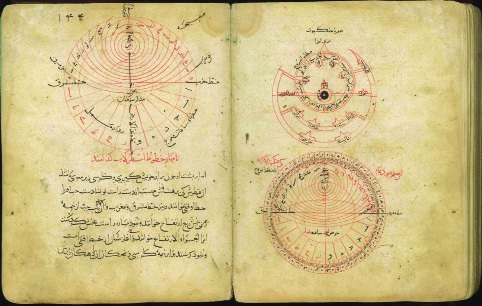
Collection of Nezami’sPanjGanj
Also known as Khamse the PanjGanj of NezāmiGanjavi, the Iranian poet and story recite (1133-1222 AD) comprises five collections of poems, namely, Makhzan-ol-Asrār, KhosrowvaShirin, LeylivaMajnun, Haft Peykar, and Eskandarnāme, all enjoying great fame as prominent literary stories in Persian. The collection constitutes one of the masterpieces of Persian literature, and includes the sweetest among Iranian lyric and Gnostic poetry manifestation. The mentioned stories are deeply rooted throughout the Middle East, Central Asia, and the Indian Subcontinent, and still function as easily and sweetly grasped poetry by native speakers of varieties of Persian. The mastery established by Nezāmi in organizing and editing his poetry has inspired more than 100 of the poets of the later periods to follow his style.
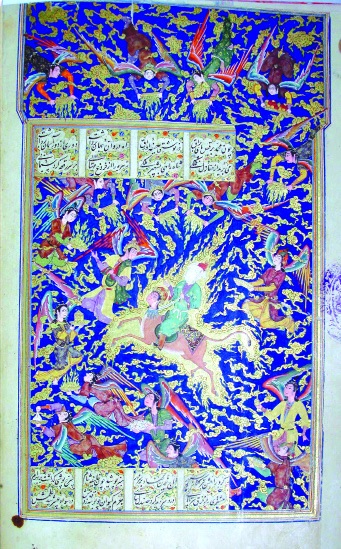
Dhakhīra-yiKhārazmshāhī
(A Reserve for the King of Khwarezm) Dhakhīra-yiKhārazmshāhī is the most famous and prestigious medical book by the Thirteenth Century. The book is a fundamental and comprehensive reference in the traditional medicine compiled by the scientist and physician Sayyed Ismail Jorjani (1040-1136) and dedicated to Qutb al-Din, King of Kharazm. In addition to its valuable and organized content in the field of diagnostics, making medicines, and remedies, the book is of a high literary value because it is written in an easy language using genuine Mid-Persian words. It is now one of the linguistic references for research especially in the field of medical words and terms. Dhakhīra-yiKhārazmshāhī has drastically influenced the scientific language in Persian literature.
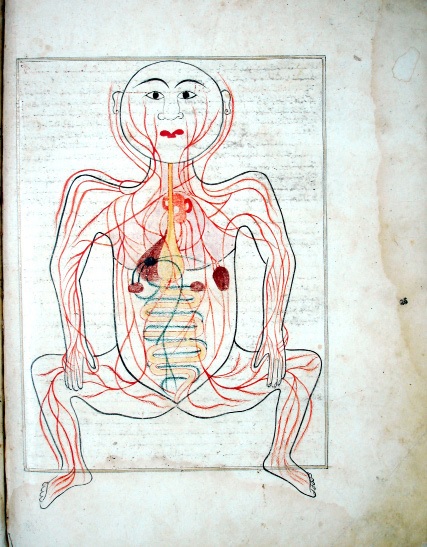
Al-MasaalikWa Al-Mamaalik (The Ways and the States)
Al-MasaalikWa Al-Mamaalik is a valuable work by the famous Iranian geographer, Abu Ishaq Ibrahim ibn Muhammad al-Farisi al Istakhri, written in the Tenth Century. The book contains a relatively detailed account of the Islamic Territory, which included the North of Africa, Arab regions, Muslim Regions of Europe, Indian Subcontinent, the whole Iranian Plateau, Middle Asia and Central Asia. Istakhri has divided the Islamic World into twenty regions. Because he has personally travelled to all those regions and done field research, his book is loaded with invaluable information to make it a unique work. In addition to geographical information, the book contains knowledge regarding the scattering of nationalities, lifestyles, agriculture, monuments, beliefs, and the rituals in the mentioned regions and their maps.
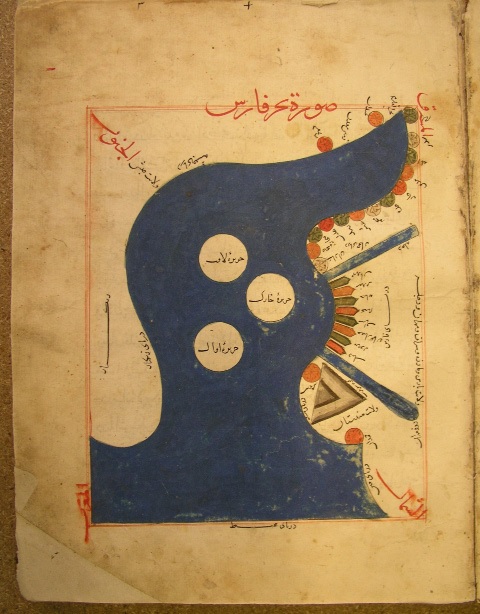
Kulliyyāt-iSadi (The Compendium of Sadi’s Works)
Sadi is a famous poet (Thirteenth Century). People like his poems and prose because of their brevity, music, comprehensibility, satire, elegance, and morals. That is why it has been propagating in different countries and various languages for centuries. Kulliyyāt-iSadi is a collocation of Sadi’s works in verse and prose among which are Bustan, Golestan, sonnets, etc. whatever the famous poet has written. The very copy inscribed in the Memory of the World Register is kept in the National Library of Iran. Written 80 years after the poet died, it is one of the oldest, most complete and most certified copies ever. Having been prepared in an exquisite royal manner, the copy represents an example of Shirazi Array in the Timurid Era.
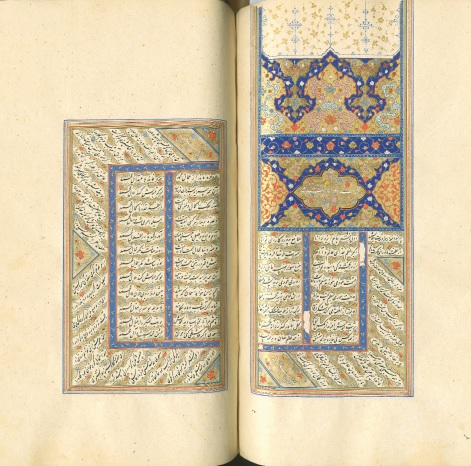
A Collection of Selected Maps of Iran in the Qajar Era
The collection includes 500 hand-made, woodprint, or lithographic maps prepared in the Qajar Era. A total of 404 titles, the maps are selected from the documents in the Document Treasury of the Iranian Ministry of Foreign Affairs between 1779 and 1925. These maps can serve as a valuable reference for geographical and demographical studies in the area of the Iranian Plateau, Mesopotamia, Anatolia, Send and Punjab, and a relatively vast part of the Silk Road. Among valuable features of the mentioned maps are lack of publishing, their reports, historical divisions by international sources and their uniqueness. The Document Treasury of the Iranian Ministry of Foreign Affairs with more than 50 million documents including reports, treaties, and historical maps since the Qajar Era until the present time is the largest archive of diplomatic documents in the Middle East.
 IranKultur – Iran | Kultur | Reisen Iranische Kulturvertretung in Deutschland
IranKultur – Iran | Kultur | Reisen Iranische Kulturvertretung in Deutschland


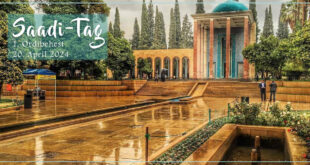
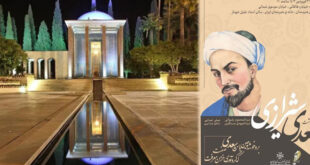


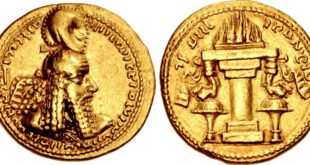
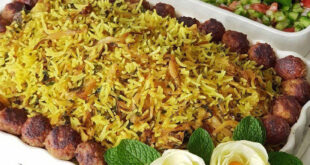

Social